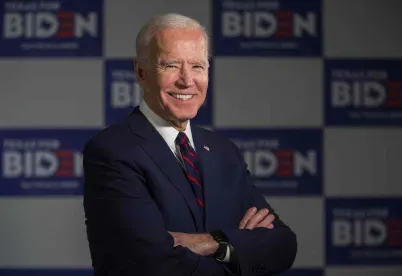President-Elect Biden will pursue transportation and infrastructure policies that not only support transportation efficiency and job growth, but also clean energy, and mitigating climate change. Biden has committed to rejoin the Paris Climate Agreement and put in place policies that would bring the U.S.to net-zero emissions by 2050. He has proposed a $2 trillion infrastructure plan to promote clean energy and modernize current U.S. systems. House and Senate Republicans also support significant infrastructure investments, but there is no bipartisan consensus on how to fund comprehensive legislation.
Key Elements of the Biden Infrastructure Proposal
-
Roads and Bridges: $50 billion in the first year to repair existing roads, highways, and bridges; expedited permitting; boost long-term surface transportation funding to states that adopt smart climate design and pollution reduction options
-
Electric Vehicles: Build a national system with 500,000 charging stations; restore full electric vehicle tax credit; $5 billion over five years at DOE for battery and storage technology
-
High Speed Rail: Expand Northeast Corridor to southern states; develop California High Speed Rail; connect coasts through the Midwest and great west; further electrify Amtrak and freight rail lines, reducing diesel fuel emissions
-
Light Rail, Urban Transit: Install systems in metro areas of 100,000 or greater by 2030; invest in pedestrian, cyclist, and micromobility vehicles
-
Airports: Double funding for FAA Airport Improvement Program
-
Freight Infrastructure: $3.5 billion for competitive BUILD grants and INFRA funding; invest in inland waterways, freight corridors, freight rail, transfer facilities, and ports; Increase Army Corps of Engineers funding by $2.5 billion for lock modernization
-
Climate Resiliency Job Training: Invest and train in coastal restoration; resilient infrastructure design, construction, and evaluation; natural solutions
-
Electric Grid: Build a “21st century power grid” to distribute clean energy; expand regional electric markets to promote renewables and demandresponse
-
Energy Efficiency: Restore residential, business efficiency tax credits; funding for low-income weatherization, expansion of Property Assesses Clean Energy (PACE) Program; restore solar investment tax credit; construct net zero carbon federal buildings
-
Drinking Water: Double funding for clean drinking water and water infrastructure programs; focus on low-income areas, with decreased local match requirement to repair existing systems
-
Broadband: $20 billion for rural broadband; support for build out of municipally-owned broadband networks
-
Public Schools: $100 billion to address health risks and improve energy efficiency


 />i
/>i

